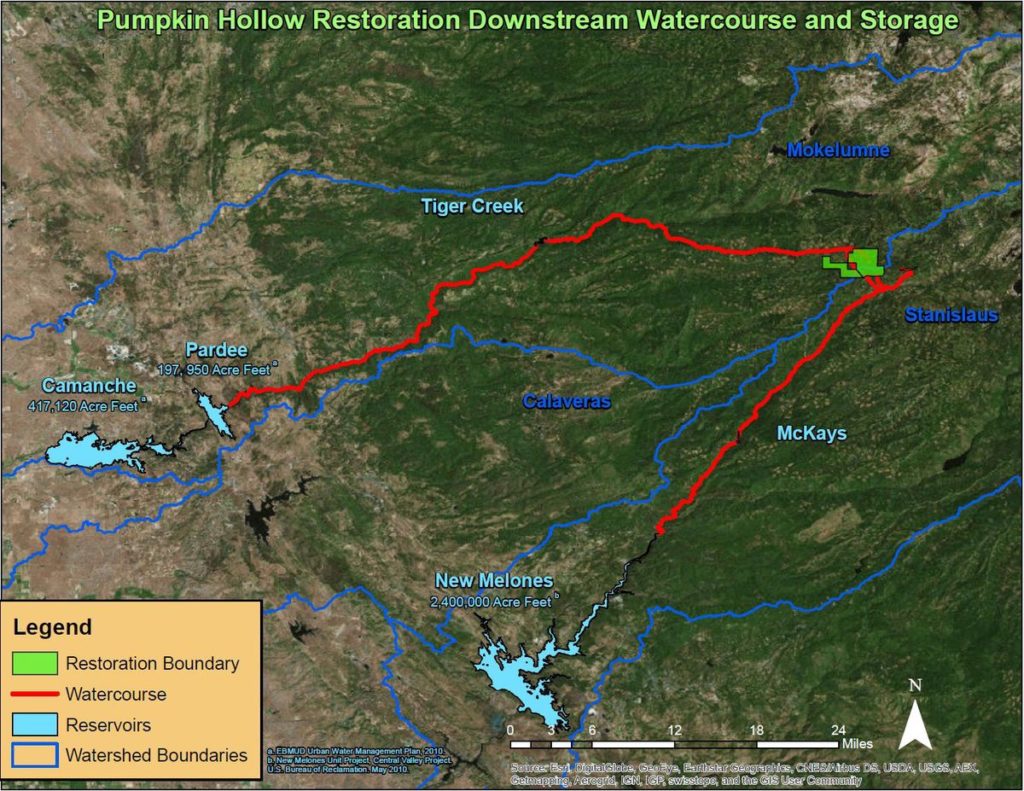Plan seeks to improve water yield for Mokelumne and Stanislaus rivers

Map Courtesy of Upper Mokelumne River Watershed Authority
September 19, 2016
The Sierra Nevada Conservancy last week approved a $500,000 grant that will support restoration of meadows and thinning of overgrown forests in the Pumpkin Hollow area not far from Cabbage Patch on Highway 4.
The grant will go to the Upper Mokelumne River Watershed Authority, a consortium of water agencies that seeks to manage the watershed. But the forest improvements are expected to improve water yield and quality to both the Mokelumne and Stanislaus rivers because water drains to both watersheds from the project area.
The grant will cover the bulk of the total $827,499 cost of the work to be conducted in the 971-acre project area. The remaining funding will come from federal grants, according to a grant application document.
The $500,000 grant to the Upper Mokelumne River Watershed Authority is just part of more than $2 million in grants for projects that will reduce wildfire risk and restore forest and watershed health in the Sierra Nevada region. Funding for these projects comes from Proposition 1, The Water Quality, Supply and Infrastructure Improvement Act of 2014. This is the fourth set of awards made under the conservancy’s Proposition 1 grant program.
“Sierra watersheds continue to face many challenges,” said conservancy Executive Officer Jim Branham. “These projects can help protect our watersheds from large, damaging wildfires, insects and disease and make them more resilient to a changing climate.”
The Pumpkin Hollow project is part of the larger Cornerstone Collaborative Forest Landscape Restoration Project that seeks to improve the health of 390,904 acres of both public and private forests. The Cornerstone program was developed through collaboration by private loggers, public land managers and environmentalists known as the Amador Calaveras Consensus Group.
The Pumpkin Hollow site is a high priority because it is severely overgrown and susceptible to drought, bark beetles and catastrophic wildfires. Work to be completed there includes removal of conifers that have invaded once-open meadows and aspen stands, thinning of overgrown forests, creation of fire breaks, erosion control on stream banks and improvements to culverts to improve water quality.
“The projects awarded today are a great example of the on-the-ground work we are accomplishing through the Sierra Nevada Watershed Improvement Program,” said Randy Moore, U.S. Forest Service Pacific Southwest regional forester.
The Sierra Nevada Conservancy was created in 2004. It is a state agency whose mission is to improve the environmental, economic and social well-being of the Sierra Nevada region.
The Sierra Nevada region spans 25 million acres, encompasses all or part of 22 counties, and runs from the Oregon border on the north to Kern County on the south. The region is the origin of more than 60 percent of California’s developed water supply.
See the original article published in the Calaveras Enterprise, here.